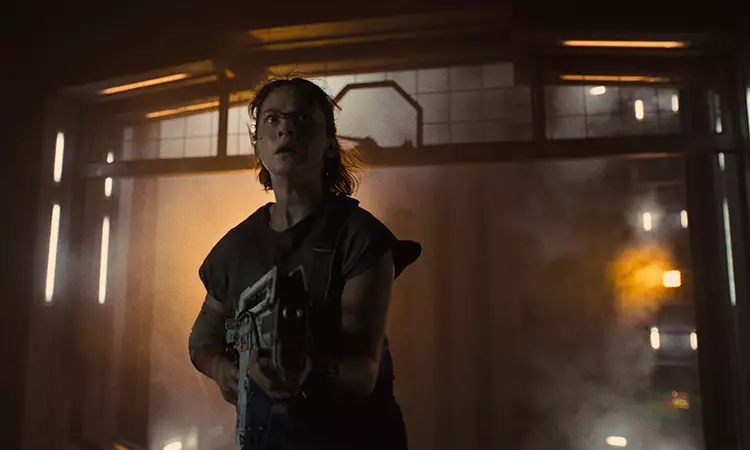Under the directorship of Fede Alvarez—renowned for his contributions to horror with projects such as the Evil Dead remake and The Girl in the Spider’s Web—this latest installment in the Alien franchise aims to rediscover the terror that defined its origins in 1979. Stripping away the deep philosophical undertones characteristic of Ridley Scott’s prequels, this new narrative refocuses on visceral fear and survival against the backdrop of a malfunctioning space station teeming with extraterrestrial dangers. The shift in tone signals a commitment to enlivening the horror elements that made the original a seminal work in science fiction cinema.
The film introduces an intriguing dynamic between Rain, a tough protagonist, and Andy, a robot suffering from processor malfunctions, reminiscent of the metaphorical tracking in classic literature such as Of Mice and Men. However, the film’s pacing feels rushed; character development is sidelined in favor of action, quickly propelling the cast to the ominous Romulus/Remus station. This hasty approach leads to a superficial engagement with the characters, potentially detracting from the emotional stakes when they confront mortal danger. While the decision to hasten the narrative aims to maintain tension, it often feels like an oversight, leaving viewers without a rich connection to the characters’ fates.
What stands out as a compelling aspect of the film is its clever reinterpretation of the franchise’s iconic elements. Although some innovations feel fresh—experimenting with the implications of acid blood or introducing new forms of terror within zero gravity—the film also leans heavily on established motifs, such as facehuggers and the ethical dilemmas linked to the Weyland-Yutani Company’s corporate machinations. The film successfully injects novel scenarios into familiar tropes, ensuring that even seasoned franchise followers encounter unexpected thrills. The blend of the old and new seeks to refresh the narrative while honoring what fans have come to expect from the Alien series.
Technological Tribulations and Narrative Twists
One aspect that falters is the integration of visual effects, particularly when a familiar character from the franchise’s past appears through computer-generated imagery. While it serves as a captivating plot device, the execution leaves something to be desired, occasionally disrupting the immersion due to visible limitations in current technology. Furthermore, the climax of the film, while energetic, recalls the anticlimactic endings of previous, less impactful installments. This repetition risks diminishing the potential for suspense that the preceding storyline masterfully builds.
An Evolving Legacy
While this entry in the Alien series attempts to revitalize the awe and horror that first captivated audiences over forty years ago, it grapples with pacing and character depth. Although it introduces inventive scenarios that align with the franchise’s legacy, certain visual shortcomings and a familiar narrative structure may prevent it from achieving the heights of originality and suspense that fans eagerly anticipate. As the Alien saga continues to unfold, one can only hope for a further evolution that balances innovation with the deeply rooted terror that defines its essence.

